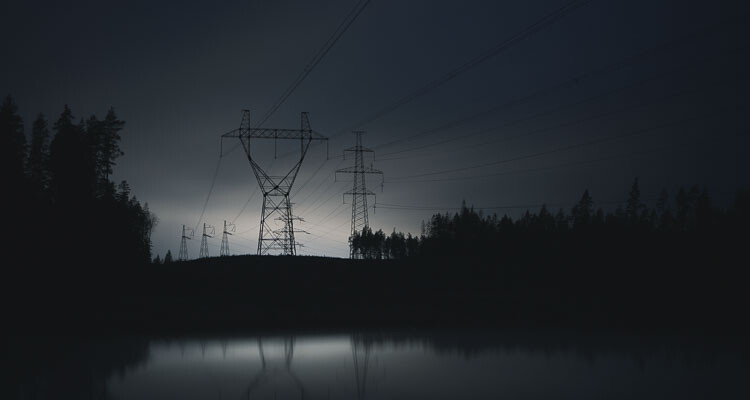
Todd Myers of the Washington Policy Center says the cost of electricity during a blackout may be zero, but people aren’t likely to see that low price as a hedge against inflation
Todd Myers
Washington Policy Center
Complaining about public opposition to construction of new wind and solar projects in Idaho, a lawyer for renewable energy companies recently claimed that those sources of energy were the “best hedge” against inflation. This is misleading – and incorrect – for several reasons.

Relying on increased wind and solar is likely to increase electricity costs for residents in Washington and Idaho, and make electricity less reliable.
One thing advocates of wind and solar frequently point to is the claim that the fuel is “free.” That claim ignores the extremely high up-front cost of those energy sources. To account for that, energy analysts create a “levelized cost of energy” (LCOE). This allows comparisons between energy that has low costs up-front but has ongoing costs for the fuel, like natural gas, and sources that have high up-front costs but low fuel costs, like wind and solar.
The most widely cited source of energy LCOE comparison is Lazard who published a new comparison in April. That analysis finds the unsubsidized cost of new natural gas power is virtually identical to new commercial wind and solar over its lifetime, adjusting for expected future inflation. Taxpayers and ratepayers will pay about the same, on average, using either source of energy. If the cost of natural gas declines in the future or doesn’t increase as quickly as expected, it could end up costing less.
This shouldn’t be surprising. A “hedge” is like an insurance policy – something that adds additional cost to avoid potential risk in the future.
Intermittent sources of energy, like wind and solar, create their own risks that need to be hedged. They put ratepayers at risk of incurring additional costs and of of blackouts.
The highest-cost electricity is during the evening, when demand is highest. That is almost exactly the moment when solar-generated electricity declines rapidly and is before wind power kicks in during the late evening and overnight. Precisely when more electricity is needed, wind and solar are virtually absent. What takes their place? The most expensive form of electricity – “peaking” generation which only is used for short periods of time. The more reliant a state is on wind and solar, the more it exposes itself to high-cost peaking power.
It is possible to store solar power generated in the middle of the day in grid-scale batteries so it can be used in the evening. But the combination of solar and batteries pushes the cost above natural gas according to Lazard.
Put another way, adding more intermittent sources of electricity means you pay twice – first for the wind and solar and then for electricity to back it up.
This is the experience in California. As they have replaced natural gas with wind and solar, their rates have climbed rapidly. To make up for the energy shortages they have during peak hours, California is buying more electricity from the Northwest, pushing costs up for Idaho, Washington and other states.
Becoming more reliant on wind and solar creates more competition for the critical, but limited, amount of electricity generation during the evening hours. California’s energy shortages would increasingly drive Idaho’s electricity prices.
The challenges don’t end there. Wind generation will virtually disappear for days in a row across the Pacific Northwest, leaving all other sources to make up the difference. For example, between May 16 and 24 of this year, the BPA system saw wind fall to virtually zero for long stretches of time. This is not unusual, and these periods of low wind often occur when it is very hot or cold and demand for heating or air conditioning increases. It becomes the worst of both worlds – high demand but low (or nonexistent) supply.
Because we have so much hydro power, the Pacific Northwest is less susceptible to some of these issues. Hydro power can be dispatched quickly to make up for the loss of power when intermittent sources of energy disappear. As demands for electricity increase, however, the gap between what can be supplied by wind and solar and what must be supplied by hydro or on the very expensive spot market grows.
The cost of electricity during a blackout may be zero, but people aren’t likely to see that low price as a hedge against inflation.
It is fine to have a mix of electricity generation. Each source of electricity entails trade offs that must be addressed. Taxpayers and ratepayers in Washington and Idaho should be wary of promises about the cost of wind and solar without considering the expensive backup sources of electricity required to make up for their shortcomings.
Todd Myers is the director of the Center for the Environment at the Washington Policy Center.
Also read:
- Opinion: OIC tells consumers not to pay for ‘insurance’ you won’t likely benefit from: Does that include WA Cares?Elizabeth New (Hovde) of the Washington Policy Center believes you should consider yourself warned by the Office of the Insurance Commissioner about WA Cares and its maybe-only benefit.
- Opinion: Same road, different speed limit?Target Zero Manager Doug Dahl addresses a question about speed limit signs going into and leaving town.
- Opinion: Hiding the growing cost of the Interstate Bridge replacementJoe Cortright of the City Observatory addresses the rising cost of the Interstate 5 Bridge replacement project.
- Letter: ‘This election I am NOT voting for Greg Cheney’Clark County resident Wynn Grcich shares her thoughts on Rep. Greg Cheney and the issue of fluoridation in area drinking water.
- POLL: Should biological males who identify as females be allowed to compete in athletic events against biological females?Should biological males who identify as females be allowed to compete in athletic events against biological females?










